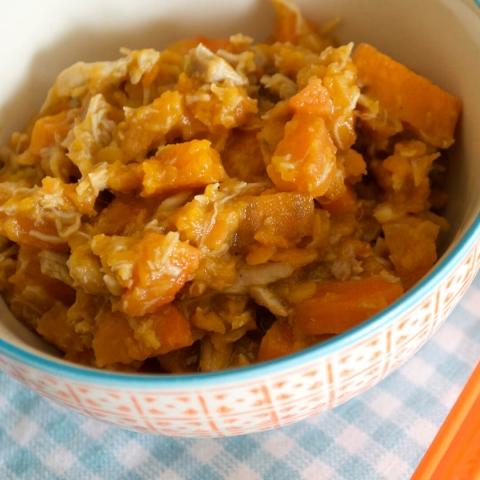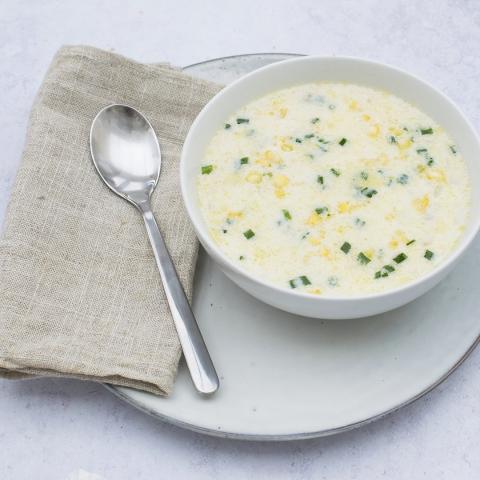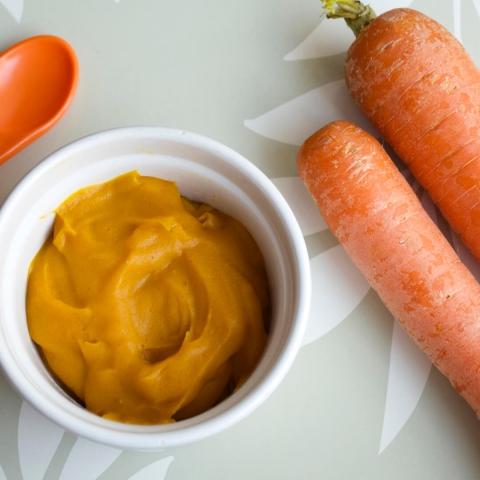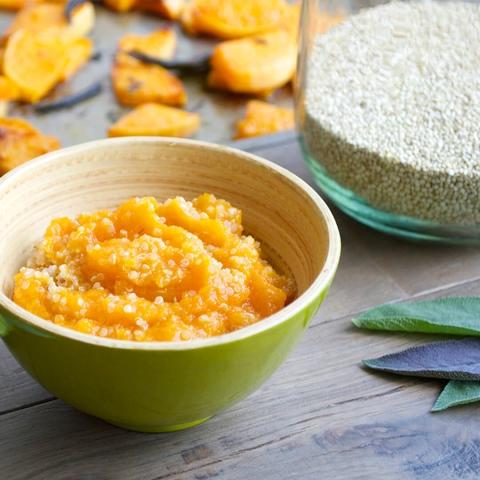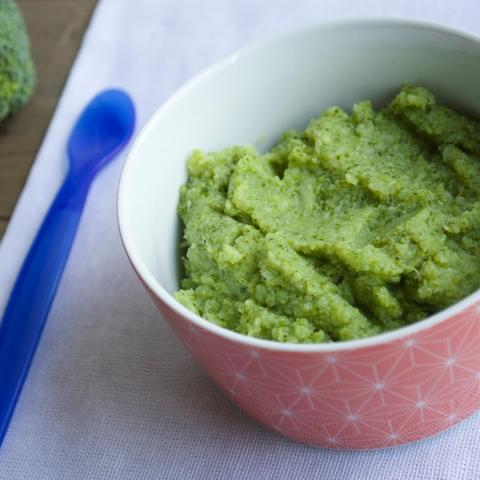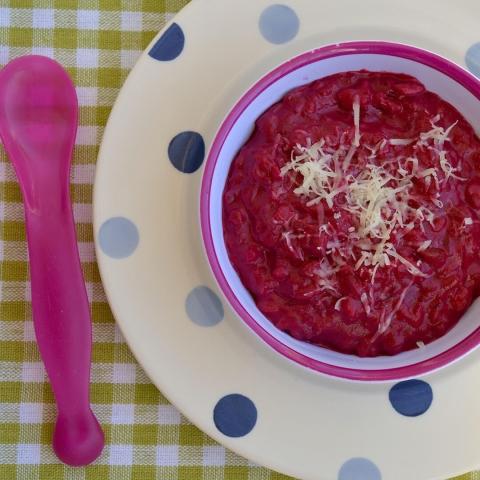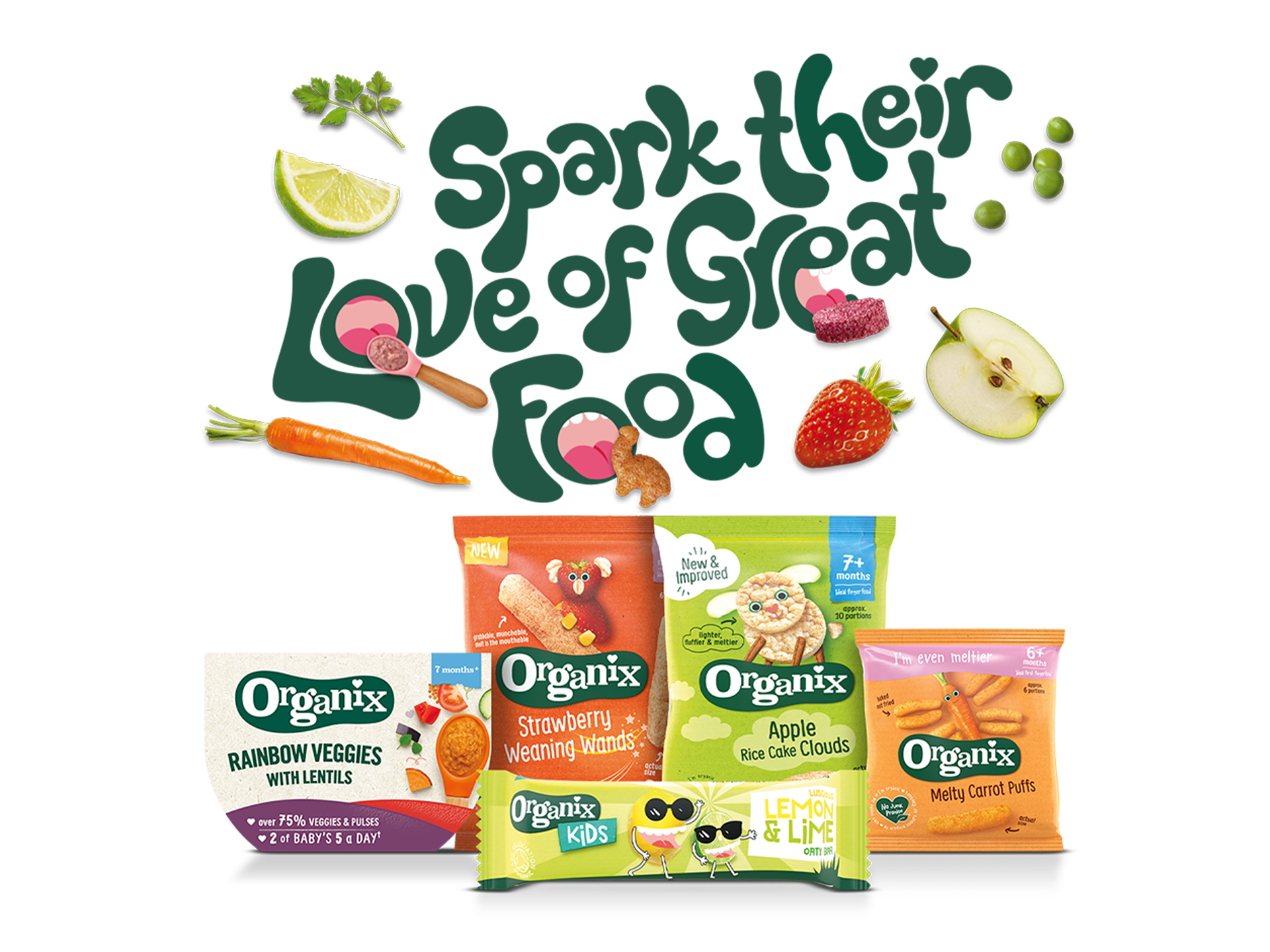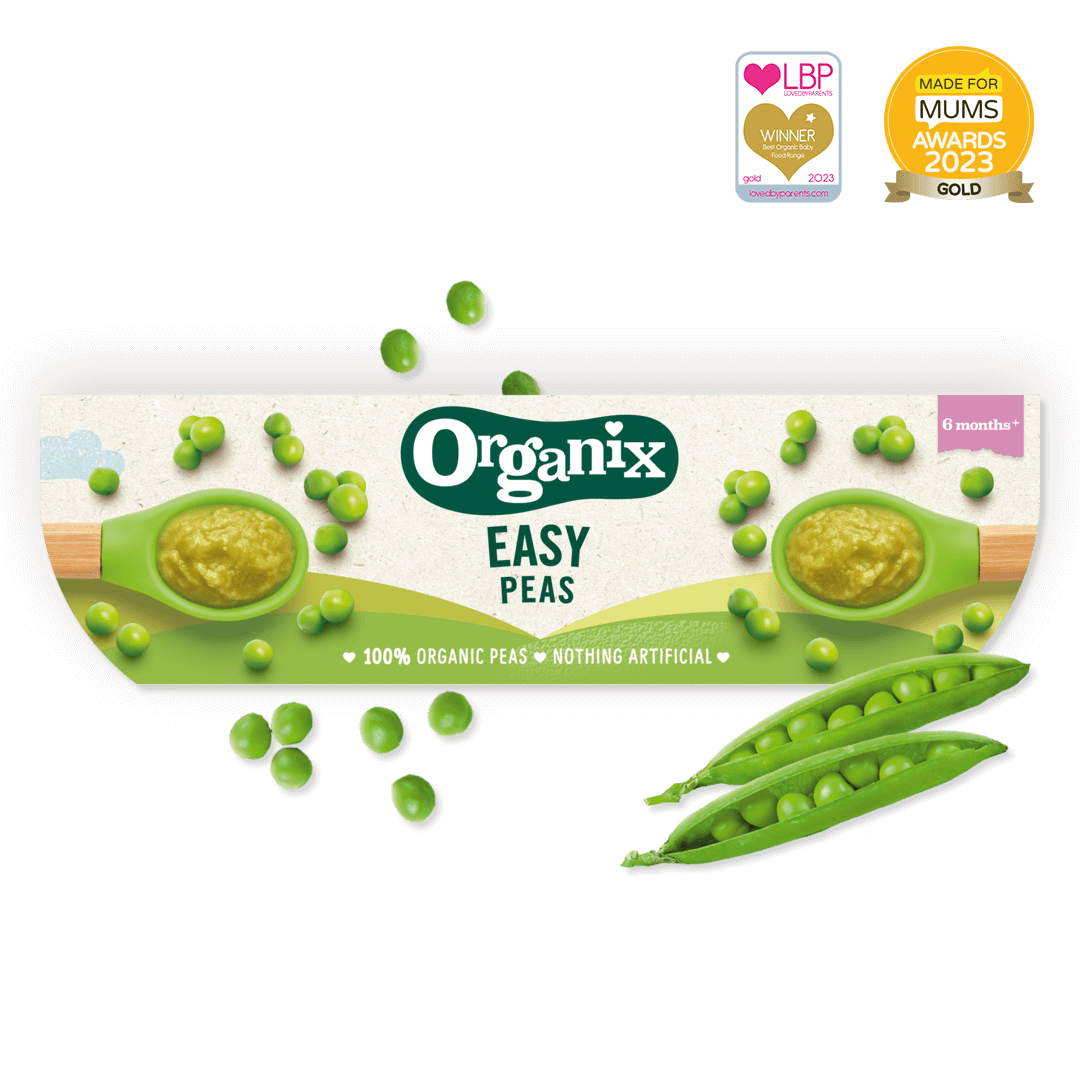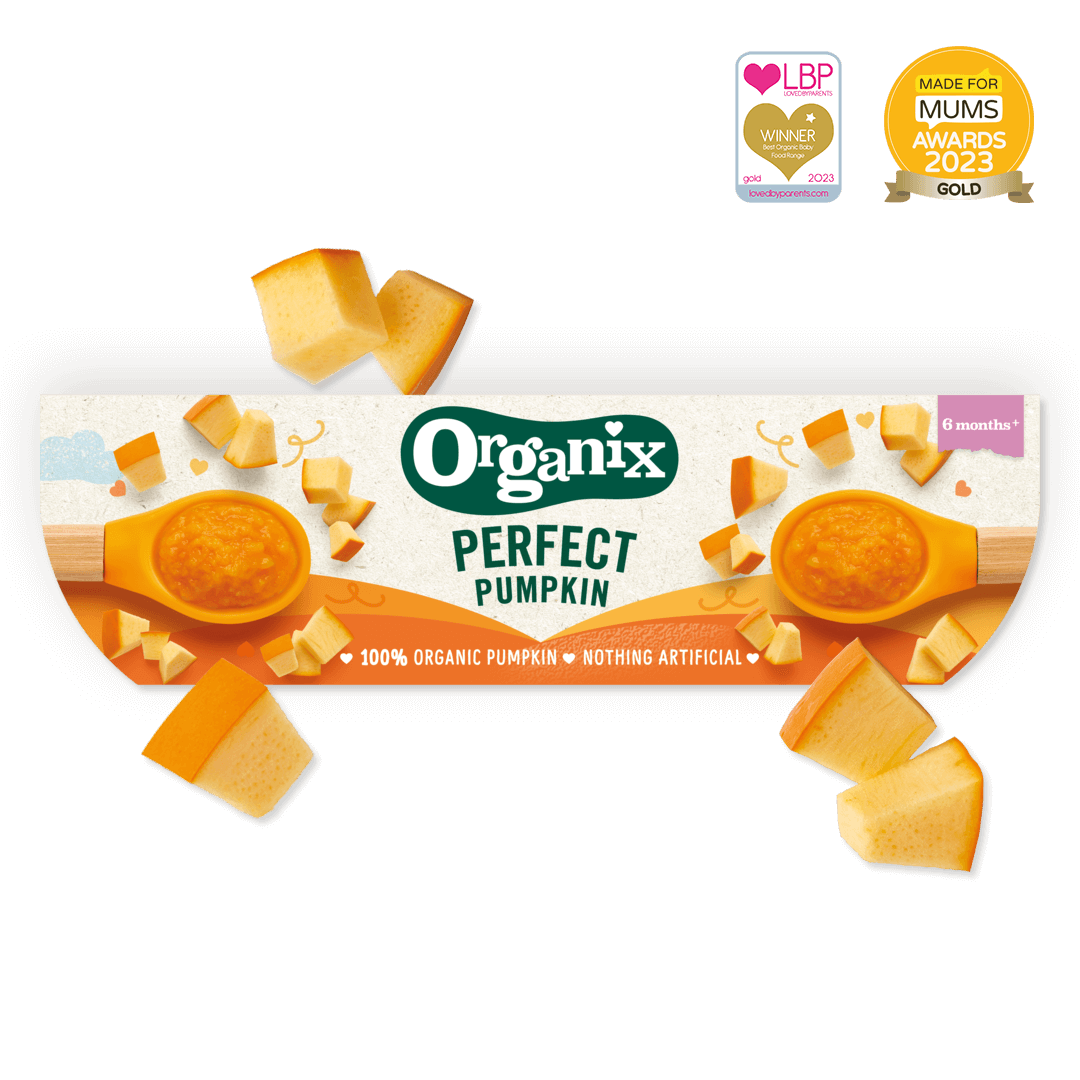
What you need
Ingredients
- Stuffing:
- Veggies:
Allergens warning
- This product contains:
- This product is suitable for:

Method
To prep, ask your butcher to remove the bone, butterfly and hammer out the leg of lamb so that it is prepped ready for you to stuff and roll, otherwise you will need to do this yourself. Ideally stuff your meat the night before for maximum flavour.
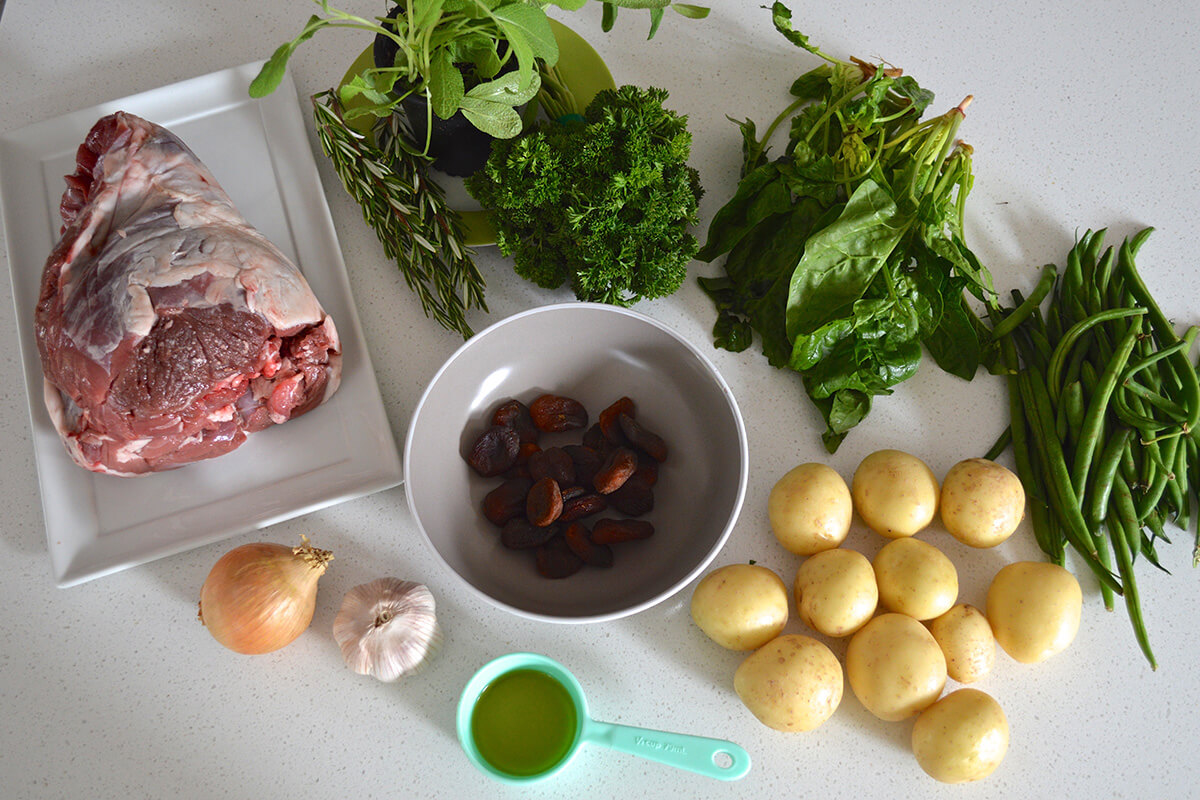
For stuffing the lamb, soak the apricots in hot water for 5 minutes until softened. Reserve about 10 apricots and keep them whole then roughly chop the rest. Finely chop the herbs, peel and roughly chop the onion and garlic then place into a blender or food processor with the olive oil. Blend into a paste, then stir in the chopped apricots. If you don’t have a blender this can all be done by hand, just chop very finely or bash with a pestle and mortar.
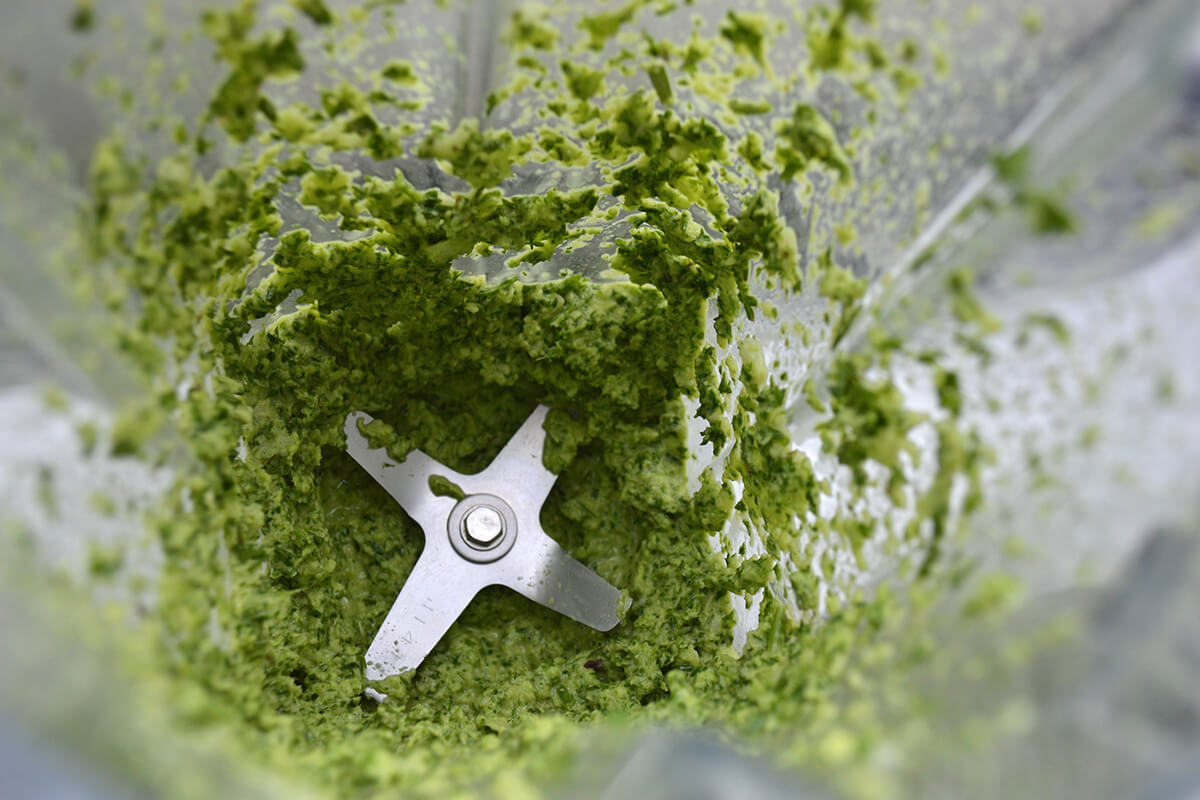
Roll out your meat onto a large piece of cling film then spread with the apricot herb paste. Add the reserved whole apricots scattered across the meat. Roll up the lamb and wrap in the cling film, then place in the fridge overnight.
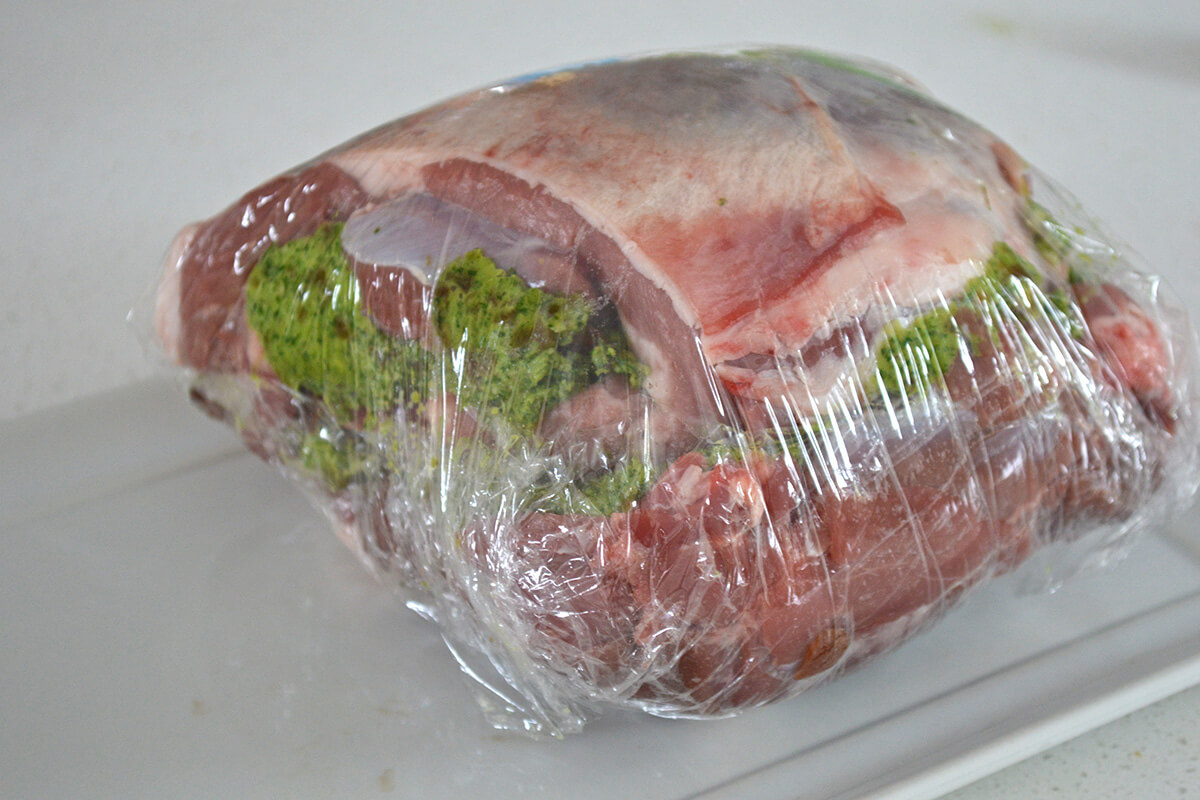
Remove the lamb from the fridge an hour before you want to cook it. Pre-heat your oven to 180°C / 160°C fan / gas mark 4. Remove the cling film from the lamb and tie it with string so that it holds its shape in a roll with the stuffing tightly inside. You can get a ‘string sock’ from your butcher which you can squeeze the rolled meat inside if you prefer. You may need a second pair of hands for this job!
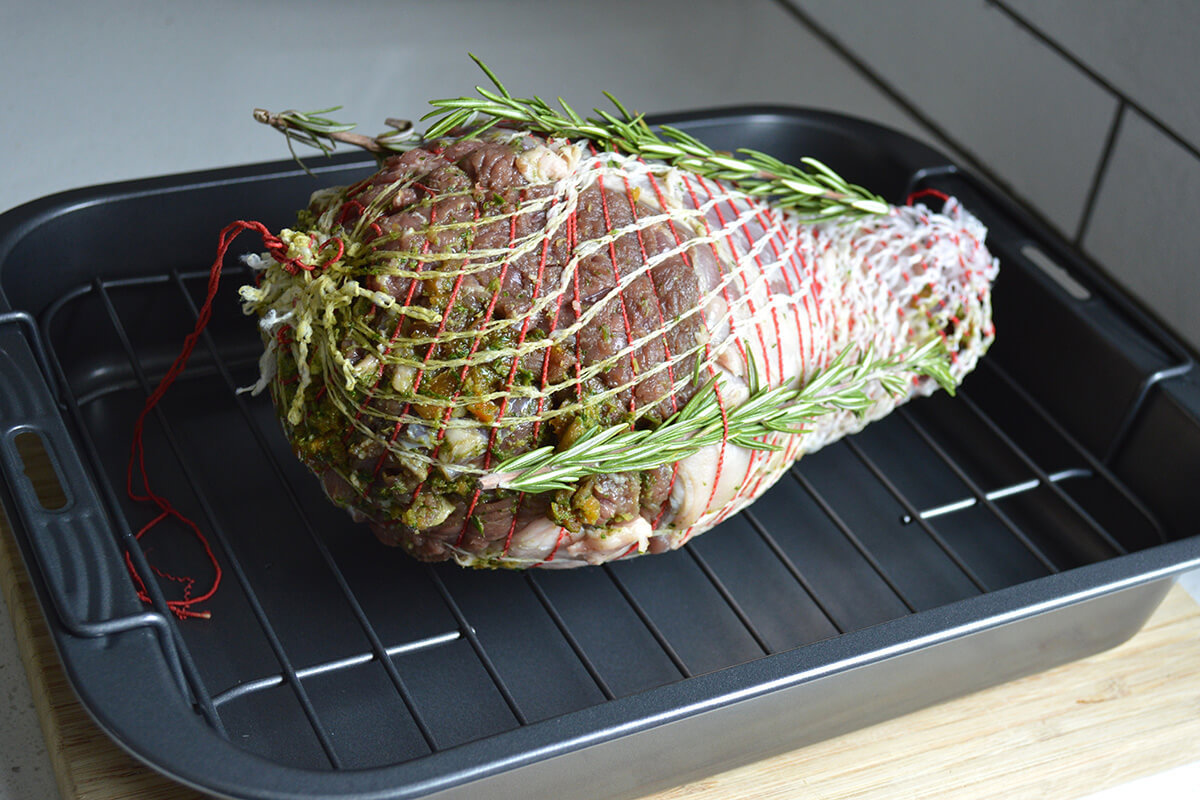
Place onto a roasting tin and into the pre-heated oven, then set a timer for 45 minutes. Check the meat at this point to see how done it is. Use an ‘instant read’ thermometer stuck into the centre of the meat. It should read between 55°C – 60°C for meat cooked to ‘medium’. The meat should not be too rare for young children. The meat will probably need another 30 minutes to another hour, depending on the thickness of your joint. Keep checking with the thermometer regularly.
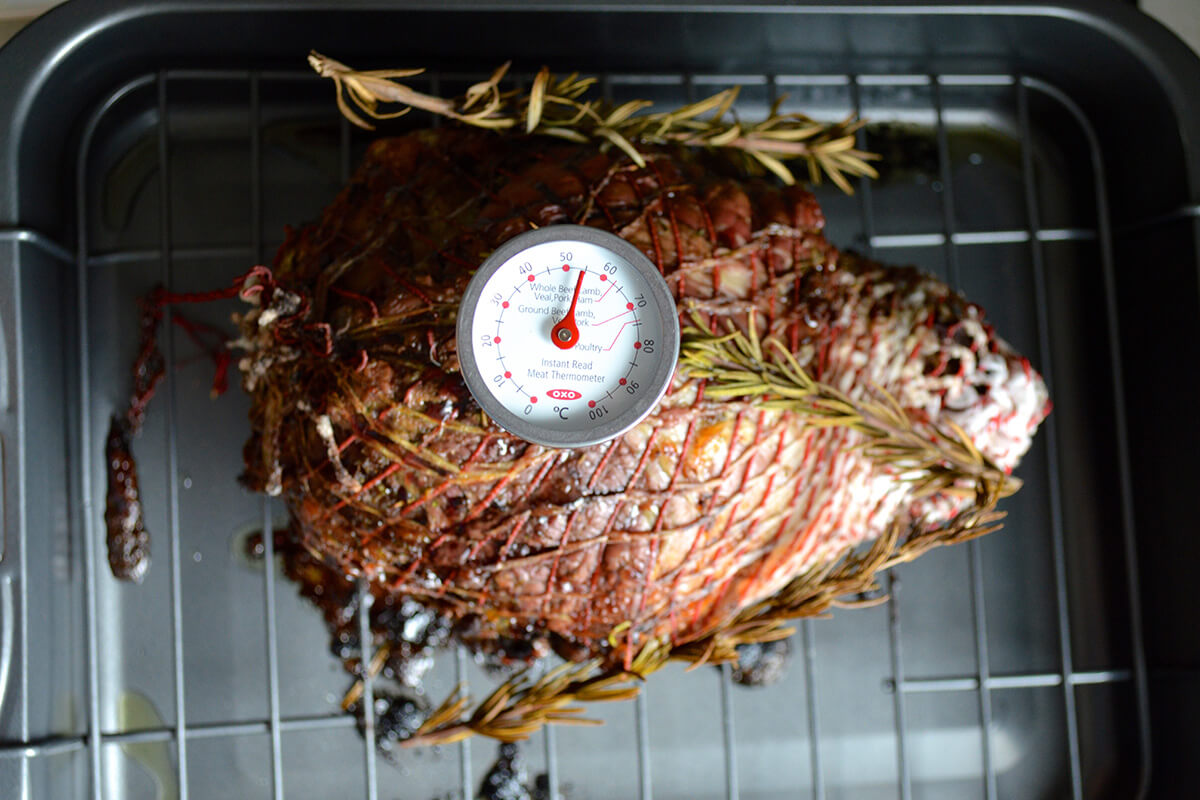
Once the meat is done, remove from the oven, cut off the string and wrap in foil for 20-30 minutes to allow the meat to ‘rest’ before serving.

For the veggies, wash and peel the potatoes then chop in half or quarters depending on size. Place in cold water and bring to the boil, then simmer rapidly for around 5-7 minutes until just tender, but not completely cooked.
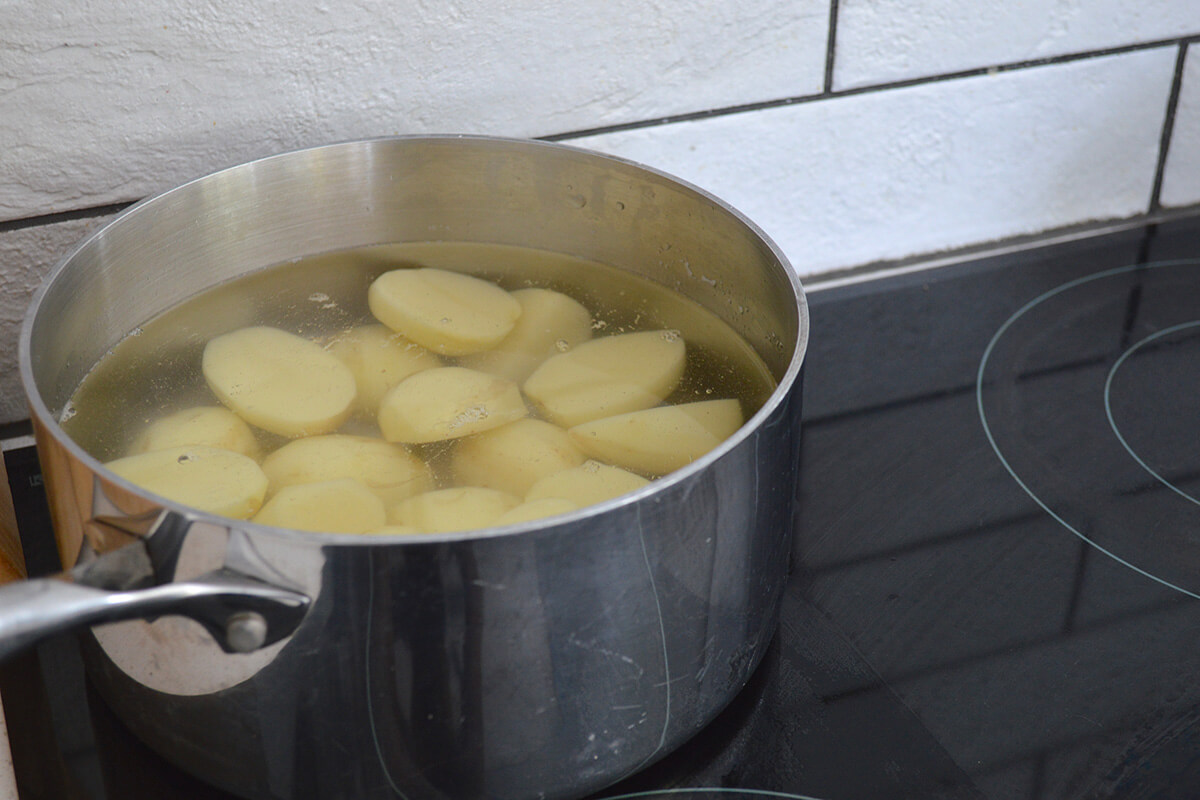
Heat a roasting tray with a little oil for a couple of minutes in the oven, then carefully add the drained potatoes into the hot oil. The potatoes will take around 40-50 minutes, so add them to the oven for the final 10 minutes of cooking time on the meat. Once the meat comes out, turn the temperature up to 220°C / 200°C fan / gas mark 7 to roast the potatoes nicely.
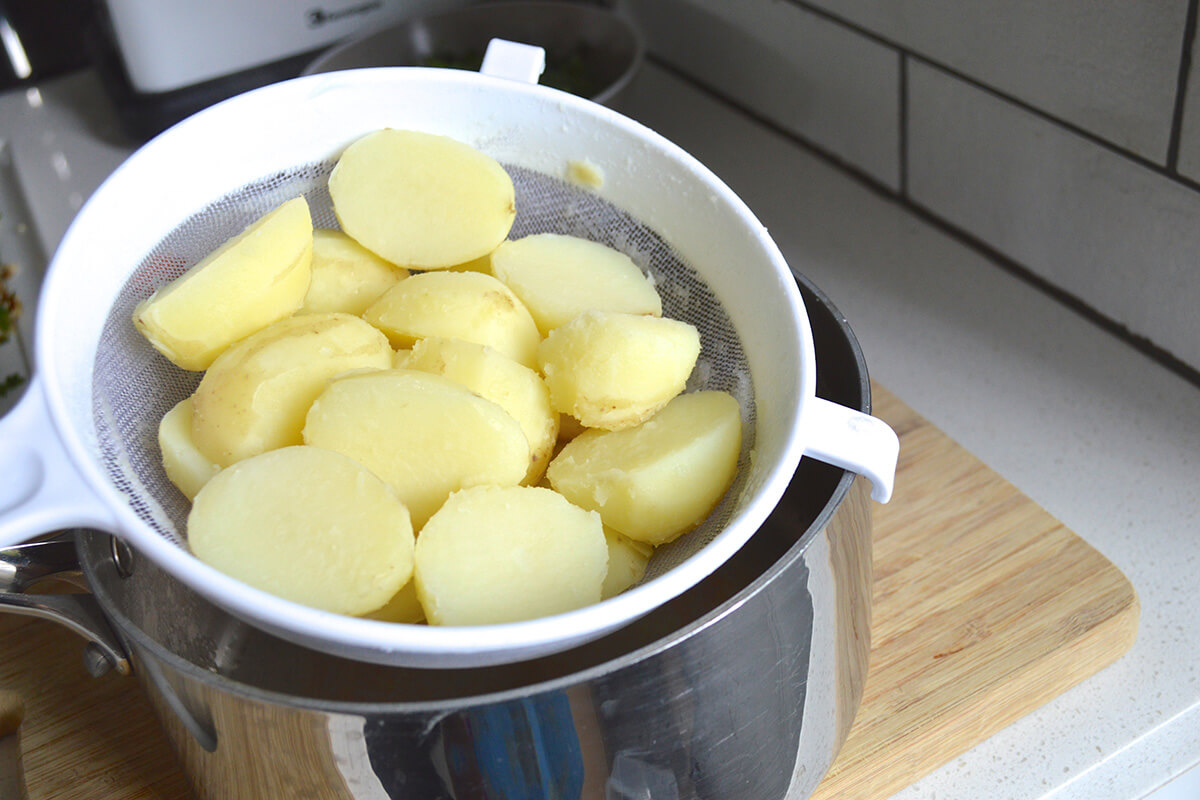
Meanwhile, trim the green beans and steam or boil for around 5 minutes just before you are ready to serve (steaming may take a little longer). Remove any tough stalks from the spinach then lightly sauté in a pan with a drizzle of oil and a knob of butter (if using) for a minute until just wilted.
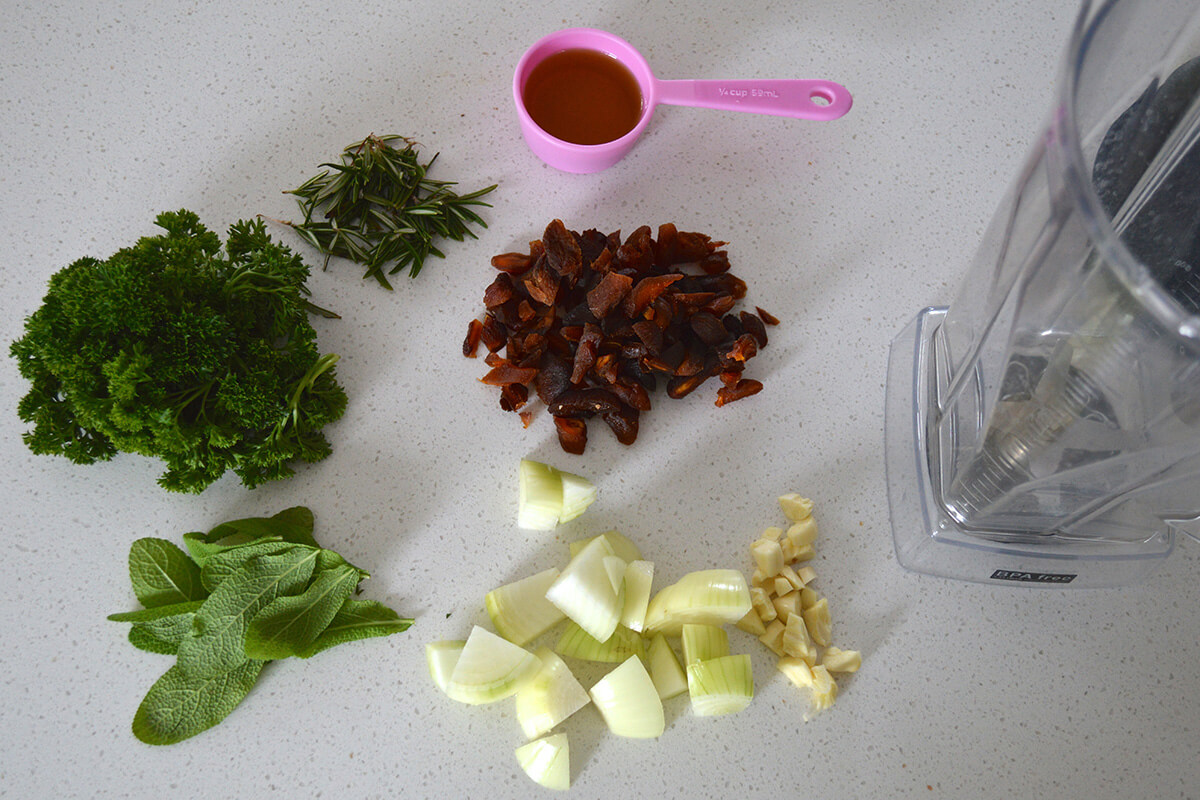
For toddlers and older children slice the lamb into small strips that can be eaten with a fork or fingers. The lamb and any veggies can be cut into smaller pieces and mixed together for younger toddlers.
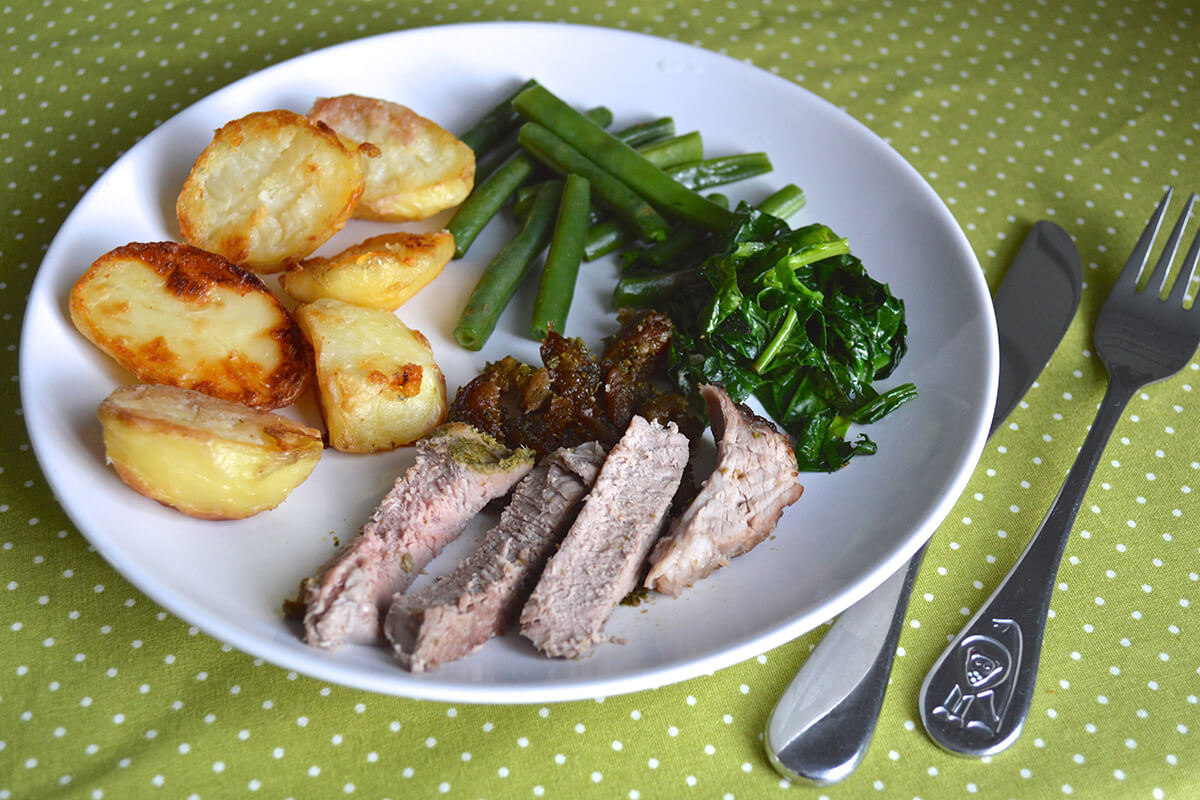
For younger babies a portion of everything can be blended roughly to a mash consistency or a smooth puree. You may want to boil some of the potatoes for a little longer until soft, then serve these with a portion of lamb instead of the roast potatoes as they will be a little less rich.
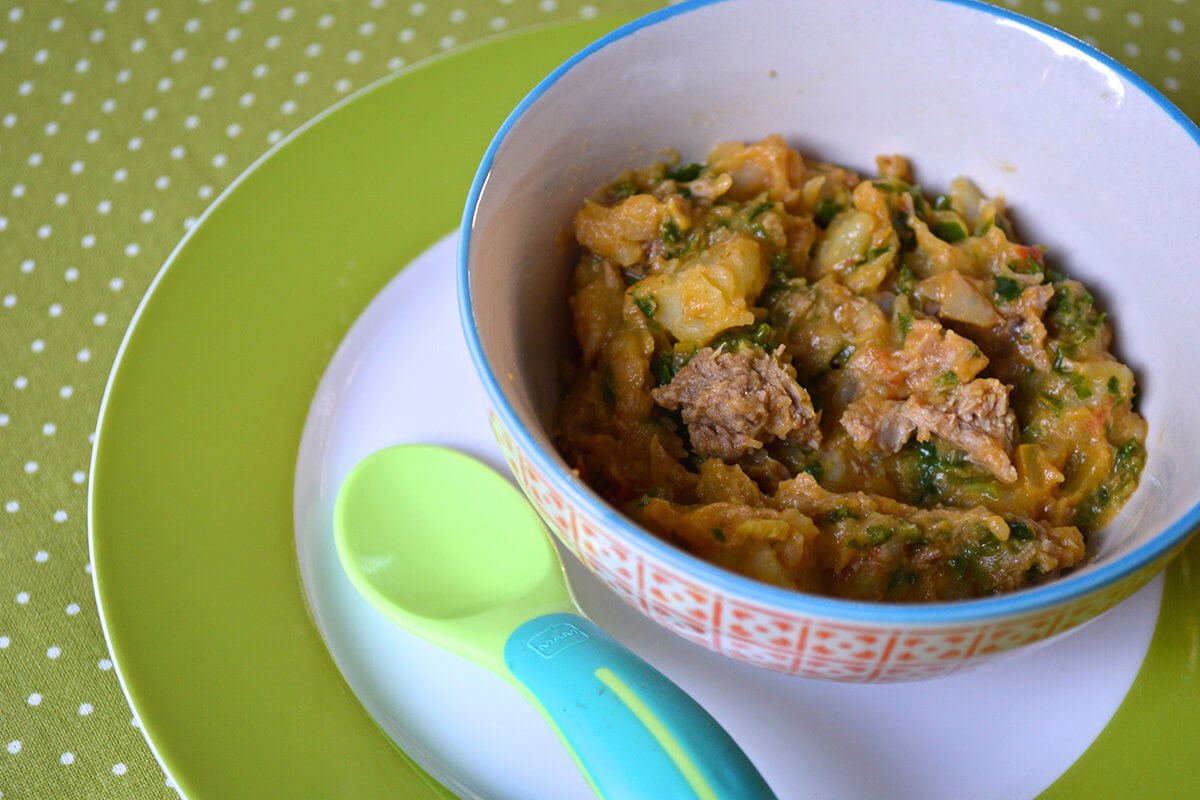
You can make a very simple ‘gravy’ or ‘jus’ by adding some hot stock to the lamb roasting pan and gently heating with the lamb juices.



